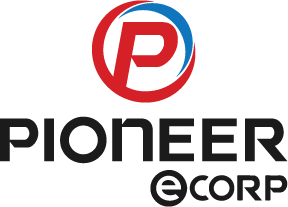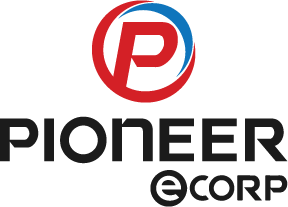
Introduction: The Evolution of Marketing
Marketing is the driving force behind business expansion. Whether through traditional marketing vs digital marketing, the aim is not just to push goods and services but also to shape branding perceptions. Marketing strategies have changed significantly over time
Classic marketing—once and for all the market leader—has increasingly been augmented and in some industries replaced by electronic marketing techniques. The transformation is influenced by consumer trends, technology, and competitive markets.
Yet, despite the growing dominance of digital channels, traditional marketing remains relevant, especially in regions where digital infrastructure is still developing. In this essay, we’ll explore the key differences between traditional and digital marketing, examine their benefits and drawbacks, and determine what works best in the current business landscape.
Traditional Marketing: Still Standing Strong
Conventional marketing encompasses all offline avenues of promotion—television commercials, radio advertisements, newspaper and magazine advertising, brochures, flyers, billboards, and mail-order advertising. These practices have been around for decades and are part of the common public psyche.
Benefits of Traditional Marketing:
Physical and Reliable: Physical media such as brochures and newspaper advertisements provide a feeling of authenticity. Older people tend to believe what they see in print more than online advertising.
Massive Reach: Television and radio have a reach of millions of people every day. A 30-second prime-time ad can reach a large number of people across various demographics.
Local Appeal: Local print media, local radio stations, and local events enable businesses to reach nearby customers effectively.
Memorability: Outdoor ads such as hoardings and billboards, if designed creatively, can be remembered and build long-term brand recall.
Disadvantages of Traditional Marketing:
Costly: Print or television advertisements can be expensive, particularly for small companies or new businesses.
Limited Interaction: One-way communication is traditional media. Customers are unable to respond or engage in real-time.
Hard to Monitor: It is challenging to effectively measure performance or determine ROI for traditional campaigns.
Real-World Example:
Coca-Cola has always banked on conventional marketing, particularly around festive times. Their print campaigns and television commercials keep their international brand image alive even in non-digital economies.
Digital Marketing: Quick, Adaptable, and Data-Driven
Digital marketing is any kind of marketing that is done online. It comprises SEO (Search Engine Optimization), SEM (Search Engine Marketing), social media marketing, email marketing, influencer marketing, content marketing, video marketing, affiliate marketing, and mobile advertising.
Benefits of Online Marketing:
Affordable: You can initiate a campaign with a limited budget. Social ads and PPC provide cheap, scalable solutions.
Targeted Marketing: You can target your perfect customer by age, gender, location, interest, online activities, etc.
Instant Analytics: Software such as Google Analytics, Facebook Insights, and HubSpot enable marketers to track campaign performance in real-time.
Global Reach: Small businesses, too, can reach global audiences through platforms such as Instagram, YouTube, and Google Ads.
Interactive Engagement: Brands can establish two-way dialogs with users through comments, reviews, polls, and stories.
Drawbacks of Digital Marketing:
Digital Fatigue: Audiences are bombarded by ads online, resulting in banner blindness and ad-blocking behavior.
Highly Competitive: It’s more difficult to cut through the noise in congested platforms unless your content is widely creative.
Technical Dependence: Success is based on proficiency in tools, SEO algorithms, and ever-evolving platform policies.
Real-World Example:
Nykaa, an Indian cosmetics brand, expanded largely online—using YouTube tutorials, Instagram influencer marketing, and SEO-heavy content to create a huge customer base.
Demographics and Device Habits: Deciding on the Basis of Audience
Your audience is most crucial when deciding whether to opt for traditional or digital marketing.
Gen X and Baby Boomers: Prefer radio, print, and TV. They are less engaged online, which makes traditional media more effective at reaching them.
Millennials and Gen Z: Spend the majority of their time online. They are more responsive to digital marketing, such as Instagram reels, YouTube material, and TikTok influencers.
Urban vs. Rural Audiences: Urban locations have greater internet penetration and mobile use, so digital is the way to go. Rural locations might still be more receptive to radio, print advertising, and community promotions.
Marketing Tip:
Always do customer research to know where your audience spends their time—whether it’s watching TV in the evening or scrolling through Instagram during their commute.
Sector-Based Marketing Suitability
Different industries benefit differently from traditional and digital approaches.
| Industry | Traditional Marketing | Digital Marketing |
| Real Estate | Print, billboards, TV | Google Ads, virtual tours |
| FMCG | TV, radio, point-of-sale | Influencer, social media |
| Healthcare | Flyers, newspaper ads | Blogs, doctor directories |
| E-commerce & D2C Brands | Rarely used | Dominantly digital |
| Education (Online Courses) | Limited | YouTube, SEO, paid ads |
| Restaurants & Local Shops | Local radio, banners | Google My Business, Zomato |
By identifying the customer journey, businesses can tailor their marketing channels for better performance.
Hybrid is the Future: The Best of Both Worlds
The best brands now employ a hybrid approach—a combination of conventional and online marketing for maximum effect.
How to Construct a Hybrid Strategy:
Employ TV and radio commercials to generate mass visibility, then send the viewers to your website or mobile app.
Release flyers or print vouchers and add QR codes for scanning that lead the users to your online marketplace.
Organize off-line events and live-stream them on Facebook, Instagram, or YouTube to expand reach.
Case Study:
Amul, India’s iconic dairy brand, triumphantly integrates both approaches. It employs conventional print cartoon advertisements in newspapers and billboards combined with a robust digital presence using memes, social media, and product videos.
Comparing Key Metrics
| Criteria | Traditional Marketing | Digital Marketing |
| Cost | High | Low to Medium (scalable) |
| Measurability | Difficult | Highly measurable |
| Reach | Mass, local | Global and targeted |
| Engagement | Low | High |
| Speed to Launch | Slow (days/weeks) | Instant |
| Adaptability | Rigid | Highly flexible |
| Trust Factor | High (older audience) | Medium (depends on brand) |
Conclusion: Choose Strategy, Not Sides
Traditional marketing vs digital marketing each bring valuable tools to the table. The key is not to pick a side, but to choose a strategy that best aligns with your business goals, audience, and budget.
Digital marketing is certainly more flexible, trackable, and cost-efficient—better suited for small businesses, start-ups, and digital-first brands. Traditional marketing, however, provides broad reach and greater levels of trust—perfect for long-standing brands and older audiences.
In the competitive market of today, a balanced, omnichannel strategy usually works best. By blending the best of both worlds strategically, companies can optimize reach, engagement, and ROI—guaranteeing success in an ever-changing marketing environment.

